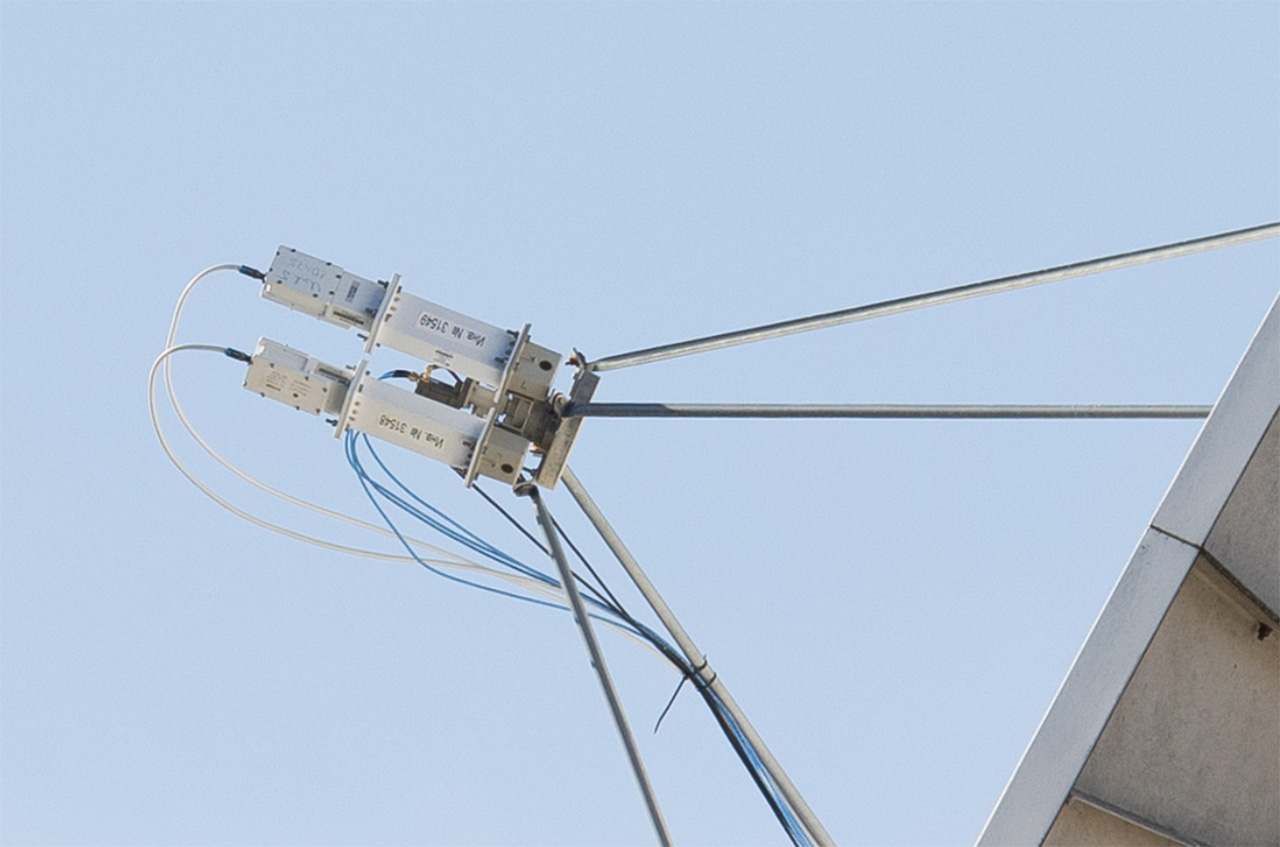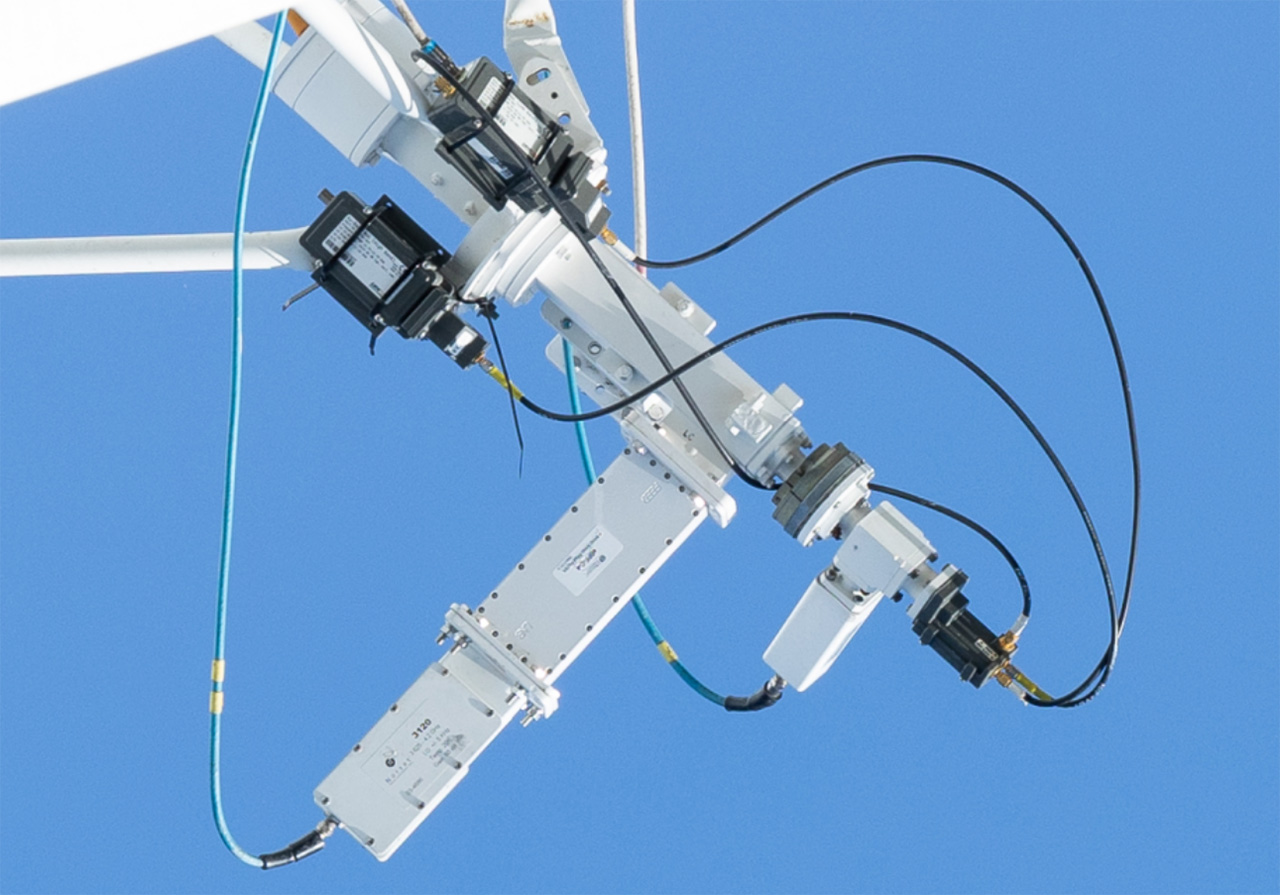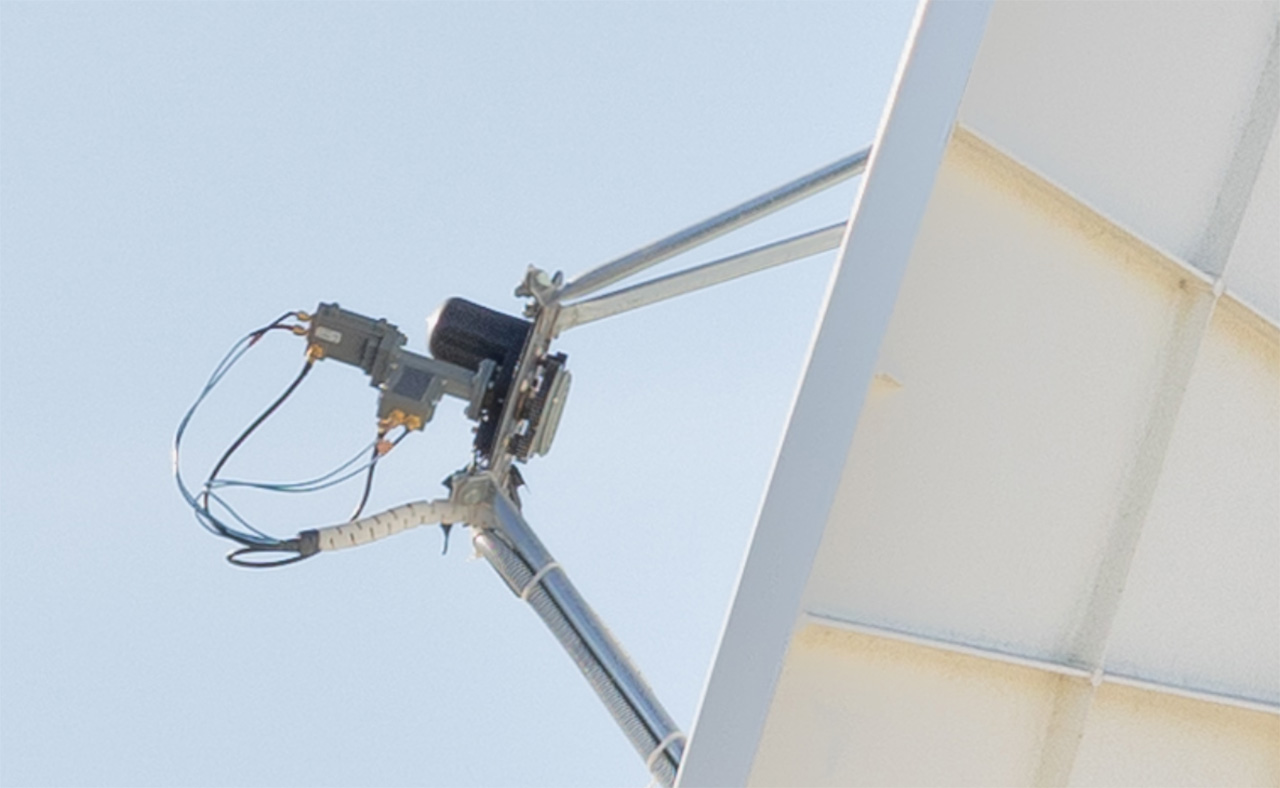Translated Article: Russia’s Satellite Spy Station in Vienna with Technology from NATO Suppliers.
Russlands Sat-Spionagestation in Wien mit Technik von NATO-Lieferanten by Erich Moechel for fm4.ORF.at
[Nobody can hide from geopolitics, neither hacker, nor governments, or even satellite antennas. Erich is a passionate ham radio operator and investigative journalist. He inspected OSINT sources and wrote a summary about an installation in Vienna run by the Russian Federation. If you are interested in wireless technology, then this article is for you.]
All components of the four large dishes come either from the Canadian company Norsat or from Swedish Microwave (SMW). Norsat is a contracting company of NATO and the Pentagon, SMW likewise primarily supplies military.
An analysis of high-resolution photos of the antennas on the roof of Russia’s UN embassy in Vienna’s 22nd district has revealed something astonishing. Most of the receiver modules of the most powerful antennas come from the Canadian company Norsat, a NATO and Pentagon contractor that claims to supply all branches of the US military.
Other modules come from the Swedish company SMW, which, like all western companies in this sector, serves the military as well as commercial satellite services. Since it is questionable whether these companies are even aware that the Russian Foreign Ministry is also one of their customers, enquiries were made to both companies.

This is the feed of one of the four large dishes on the roof of the Russian UN embassy, the exact location of which is shown in the screenshots in the link below. A comparison with the product line of the leading supplier of satellite modules and VSAT terminals, Norsat from Canada, shows such striking similarities, especially in construction and design, that it can be assumed that these modules actually all come from Norsat. This is equally and even more true for another large dish (see below). This and also the following photos can be used with the reference to the licence CC BY-SA 3.0.
Hunting for VSAT connections
The dish above is currently equipped with a double module from Norsat, which hangs on the same feed via a splitter. One of these two elements is designed for the lower satellite bands in the range from 1 to 8 GHz. Depending on the module used in between, the dish can be equipped for one or more of these three frequency bands of the satellite spectrum, namely L, S or C. It is not possible to determine from the photos alone for which band this dish is currently configured. However, it can be assumed that it is the C band. (see below).
The black part in the middle between the modules is a splitter through which module two is connected. The connections here are for the upper bands X, K and Ku (downlink 7-12.5 GHz). By far the most data transponders in Europe, which every television satellite also has, operate in the Ku band. VSAT internet connections and data links between different regions are offered in varying bandwidths, but also long-distance transmissions via so-called “wide beams”. The combination of C- and Ku-band refers to satellites that have downlinks in these two bands.

According to its own information, Norsat, in addition to Boeing, Reuters or CBS and other companies, supplies NATO, the US Department of Defence, all parts of the US military complex from the Army to the Air Force, General Dynamics and probably other defence companies.
Lots of Norsat filters
Another antenna (see picture below) shows a very similar but more sophisticated set-up for the two satellite bands mentioned above. All white elements can be undoubtedly assigned to Norsat. The short element, offset by 90 degrees, is probably an LNB, i.e. a combined frequency converter for the Ku band (downlink 10.9-12.75 GHz). The long, double plug-in module, also offset by 90 degrees, together with the square, white centre piece should be a three-part combined bandpass filter for the range from 3.4 GHz.
This is the extended downlink range in the C-band and it overlaps with the 4G/5G frequency range of the mobile radio operators in the 3.4 to 3.8 GHz range, which has already been allocated in Austria. This enormous filtering effort is necessary because the signals from the mobile phone masts in the 22nd district on the roof of the Russian embassy are hit with field strengths that are greater by powers of ten than the signals from a satellite beaming down from a distance of 35,000 kilometres.

This is the feed of the four-metre dish on the south-eastern edge of the antenna platform. All white modules and the centre section are from Norsat. The two olive-green modules can almost certainly be attributed to Swedish Microwave (SMW), as virtually all components from this company are in this military colour. What role the two SMW components play in the above set-up has not yet been clarified. Equipment can also be found on another antenna. (CC BY-SA 3.0).
Targets in the Middle East and Africa
In their current configuration, these two mirrors thus have satellites in their sights that operate both Ku-band beams and C-band beams. This oldest of all satellite bands is still used today primarily in four regions of the world, namely Russia, the Middle East, Asia and Africa. These two dishes are used for intelligence gathering and directly reflect Russia’s strategic interests and military engagements in Africa and the Middle East. In other words, these dishes are most likely targeting satellites that provide VSAT internet and data feeds to regions in Africa and the Middle East respectively.

This dish is only equipped with microwave components from SMW. From the size of the modules, which shrinks with increasing frequency, the configuration is designed for one or two of the upper SAT bands. This antenna could well be equipped for the super-wideband, but technically very demanding Ka-band (downlink 17.5 to 22.5 GHz). This is also indicated by the extremely tight cable routing, in which sense this antenna is an absolute exception on this roof. (CC BY-SA 3.0)

SIGINT is not always about the content. Frequency, duration, and other metadata of communication is equally important.
What will Russia gain by sniffing satellite internet connection!? Its buchof random bytes and chunks of data Primary porn hhhh